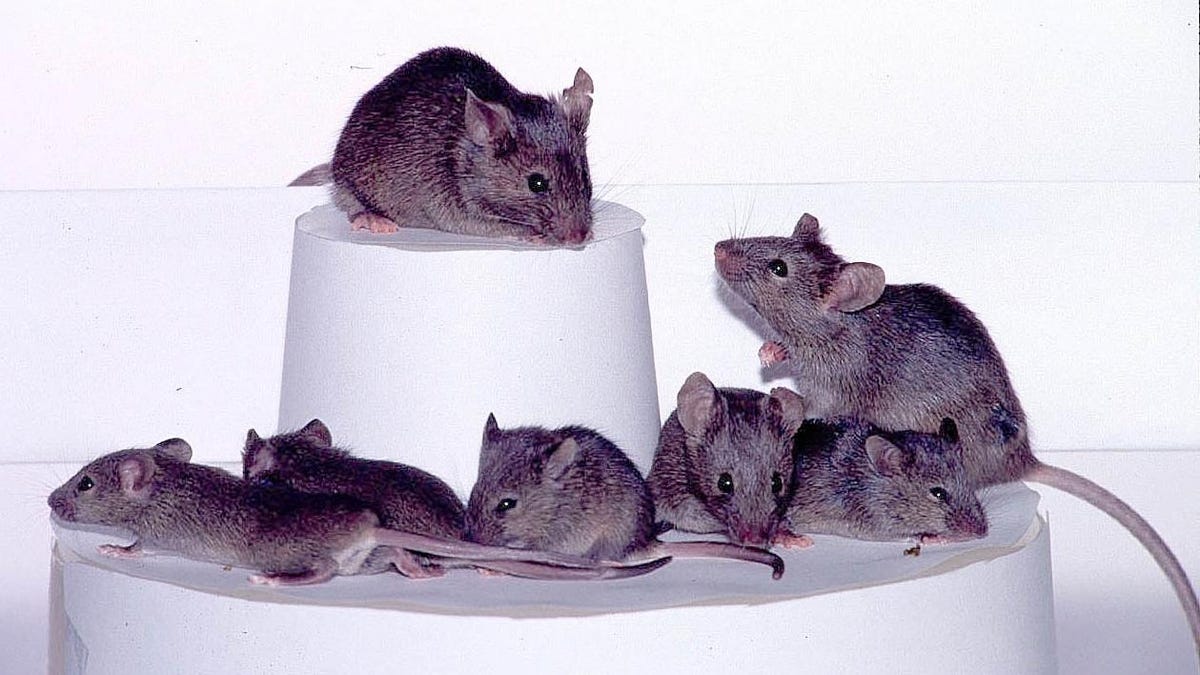
When you look in the mirror, what do you see? In all likelihood, you see a complex shape that you immediately recognize as yourself. Now, a team of researchers has found that mice appear capable of doing the same thing.
That’s right: Mice may now join the small cadre of mammals that pass the so-called mirror test, suggesting they can tell the difference between a reflection of themselves and a view of another mouse. Other mammals that have demonstrated ‘mirror-induced self-directed behavior,’ as it’s known, are humans, great apes, some monkeys, dolphins, and elephants. Researchers published details of their experiments with mice and mirrors today in the journal Neuron.
Advertisement
“To form episodic memory, for example, of events in our daily life, brains form and store information about where, what, when, and who, and the most important component is self-information or status,” said Takashi Kitamura, a neuroscientist at University of Texas Southwestern Medical Center and a co-author of the study, in a Cell release. “Researchers usually examine how the brain encodes or recognizes others, but the self-information aspect is unclear.”
Advertisement
Advertisement
To determine whether the mice could self-recognize, the researchers marked the foreheads of dark-furred mice with white ink and released them into a box, one side of which was a mirror. The mice would look in the mirror and then groom themselves—apparently to get the ink splotch off their face. The mice did not groom themselves in front of the mirror when the white ink was a smaller blotch or when it was swapped out for black ink that blended into their fur.
Additionally, mice who were not habituated to mirrors before the test did not groom their heads. “The mice required significant external sensory cues to pass the mirror test—we have to put a lot of ink on their heads, and then the tactile stimulus coming from the ink somehow enables the animal to detect the ink on their heads via a mirror reflection,” said lead author Jun Yokose, a researcher at the University of Texas Southwestern Medical Center, in the release. “Chimps and humans don’t need any of that extra sensory stimulus.”
Advertisement
Though the animals clearly were able to see that they had something on their heads, this self-recognition does not necessarily mean the animals are “self-aware” in a deeper sense. As Gizmodo has previously reported, the mirror experiment isn’t a way to truly understand animal intelligence or psychological complexity.
The team used gene expression mapping to identify a group of neurons in the rodents’ ventral hippocampus that were activated in the mice that exhibited self-recognition. When those neurons were rendered non-function in the lab setting, the mice did not repeat the grooming behavior. The same neurons were activated when the mice observed others with the same physical characteristics, but not when the mice observed mice with different colored fur.
Advertisement
Furthermore, the team found that mice that were socially isolated after weaning—meaning they did not have the chance to learn socially—did not try to get the ink off their foreheads. Neither did black-furred mice that were raised alongside white-furred mice. Together, that suggested to the team that, to exhibit the self-recognizing behavior, the mice needed to be raised alongside similar-looking mice.
“This is consistent with previous human literature that showed that some hippocampal cells fire not only when the person is looking at themselves, but also when they look at familiar people like a parent,” Kitamura said.
Advertisement
Non-mammalian species have also exhibited mirror-induced self-directed behavior when experiments have been designed for them; Eurasian magpies, the soon-to-be-renamed Clark’s nutcracker, and cleaner wrasses have also shown the ability to self-identify.
The research team now hopes to learn if the mice can self-recognize without a tactile stimulus—that is, a big ink blot on their foreheads. That research may involve similar face-changing filters to those on apps like TikTok or Instagram. They will also probe the rodents’ brains to better understand how the animals are making sense of what they see and how they discern themselves from other animals.
Advertisement
More: Scientists Grow Mouse Embryos in Space for the First Time
Services Marketplace – Listings, Bookings & Reviews